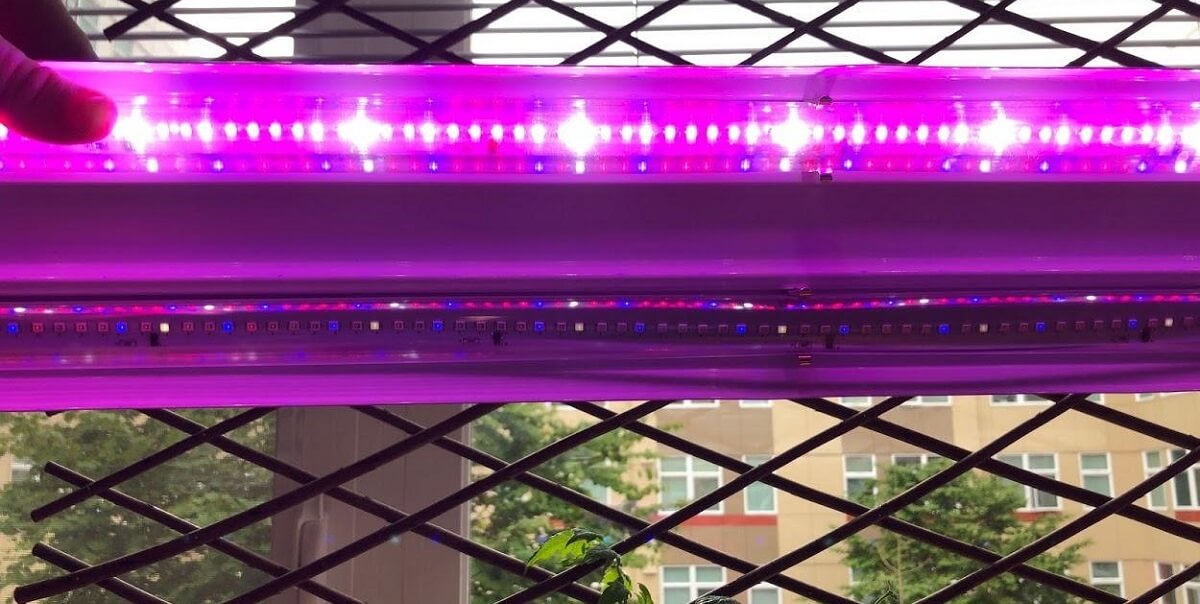The growth of most plants relies heavily on light, and an ample supply of light is essential to ensure that plants can undergo photosynthesis. Providing supplemental light to plants at night is a common practice for many plant growers. In recent years, LED lights have gained popularity due to their long lifespan and high energy efficiency. So, is LED lights good for plants?
To understand if LED lights are beneficial for plants, let's first explore what LED lights are. LED stands for Light Emitting Diode, and unlike traditional incandescent bulbs and fluorescent lights, LED lights utilize semiconductor components to emit light. When an electric current passes through them, they emit light instantly and can produce bright illumination.
LED lights come in various types, each applied in different industries, such as high bay LED lights, red lights, blue lights, etc. In the field of plant cultivation, LED plant growth lights play a crucial role. Unlike traditional plant growth lights, these new LED plant grow lights not only have better energy efficiency but also excel in flexibility of design.
Reasons why LED plant growth lights are increasingly popular:
1. High Energy Efficiency: LED plant growth lights inherit the advantages of LED lights, exhibiting extremely high energy utilization. Compared to conventional plant growth lights, LED plant growth lights not only save a significant amount of energy in the same timeframe but also emit stronger light.
2. Low Heat Emission: LED growth lights do not release as much heat as traditional plant growth lights during operation. Even during prolonged use, the heat emitted by LED plant growth lights does not adversely affect plants.
3. Customizable Spectrum: The light source of LED plant growth lights consists of multiple LED particles. Different plants require different light wavelengths at various growth stages. LED plant growth lights with customizable spectrums have lower costs and higher efficiency, something traditional plant growth lights cannot achieve.
4. Long Lifespan: Like other LED fixtures, LED plant growth lights have an exceptionally long lifespan, averaging over 50,000 hours. This significantly reduces the average operating cost of LED plant growth lights.
How do LED Lights Benefit Plant Growth?
LED plant grow lights provide the light energy needed for photosynthesis, the process where plants convert light into energy. By using LED lights, growers can optimize the spectrum to promote specific stages of plant growth:
Nutrient Growth: LED lights with a higher proportion of blue light stimulate nutrient growth, promoting the development of leaves and stems.
Flowering and fruiting: LED lights with a higher proportion of red light promote flowering and fruiting, enhancing yield.
LED lights also offer better light penetration, ensuring that all parts of the plant receive light evenly, leading to more uniform growth.
Drawbacks of LED Plant Growth Lights:
High Initial Purchase Cost: Similar to other LED fixtures, the initial cost of purchasing LED growth lights can be relatively high. If it's just a passing interest or hobby, investing in LED plant growth lights may not be cost-effective.
Complexity: Customizing the spectrum of LED grow light for indoor plants requires a thorough understanding of the light wavelengths needed for various plants at different growth stages. This can be a challenging task during the initial preparation phase.
In conclusion, LED lights are beneficial for plants, especially specific LED plant growth lights. Full-spectrum LED plant growth lights can provide the appropriate light environment throughout the entire plant growth cycle. Investing in LED plant growth lights is highly advantageous for the growth of your plants, as more light exposure time leads to faster, healthier, and more vibrant plant growth, ultimately resulting in higher yields.



